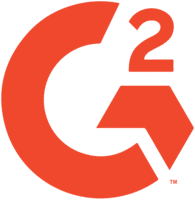The recruitment landscape has evolved significantly over the years, with technology playing a pivotal role in streamlining and enhancing the hiring process. As the job market becomes increasingly competitive, organizations are recognizing the need for efficient and effective recruitment technology to attract, assess, and hire top talent. However, with a plethora of options available, choosing the right recruitment technology can be a daunting task.
According to an article in Harvard Business Review, choosing the right recruitment technology involves understanding your specific needs. Companies should focus on aspects like scalability, ease of integration, and data analytics capabilities. An extensive evaluation process can result in a 21% increase in hiring efficiency and a 17% reduction in recruitment costs.
In this blog, we’ll guide you through the process of selecting the right recruitment technology for your unique needs.
Define your recruitment goals
Defining your recruitment goals is the crucial first step in the process of selecting the right recruitment technology for your organization. It serves as the foundation upon which your entire recruitment strategy will be built. Without a clear understanding of what you aim to achieve, you risk making hasty and ill-informed technology choices that might not align with your needs.
Recruitment goals can vary widely between organizations. Some may seek to reduce their time-to-hire, hoping to swiftly secure top talent before competitors do. Others may prioritize improving the quality of hires, aiming for candidates who not only possess the required skills but also fit seamlessly into the company culture. There are those who focus on enhancing the candidate experience to attract top talent and maintain a positive employer brand. Reducing recruitment costs or streamlining the hiring process are additional common objectives.
To define your recruitment goals, it’s crucial to engage in strategic discussions with key stakeholders in your organization. Understand what your immediate and long-term recruitment needs are. Once you’ve established these goals, you can then select recruitment technology that aligns with your specific objectives. This ensures that you invest in tools and platforms that not only meet your immediate needs but also contribute to your organization’s long-term success in the competitive world of talent acquisition.
Some common goals might include:
- Reducing time-to-hire
- Improving the quality of hires
- Enhancing the candidate experience
- Reducing recruitment costs
- Streamlining the hiring process
By defining your goals, you can narrow down your options and focus on the technology that aligns with your objectives.
Understand your budget
Understanding your budget is a pivotal factor in the process of choosing the right recruitment technology for your organization. The cost associated with recruitment technology can vary widely, ranging from free or low-cost solutions with basic features to high-end, comprehensive platforms that require a substantial financial investment. Therefore, setting a clear budget is essential to ensure you select a solution that aligns with your financial capabilities.
The budgeting process should encompass more than just the initial expenses of acquiring the technology. It’s equally important to account for ongoing costs, such as subscription fees, maintenance charges, and any additional expenses related to upgrades or customizations. By comprehensively evaluating the total cost of ownership, you can avoid unpleasant financial surprises down the road.
While it’s important to be mindful of expenses, don’t view your budget as a mere constraint. Instead, consider it an opportunity to assess the return on investment (ROI) you expect from the recruitment technology. Think about the long-term value the technology will bring to your organization. Will it reduce hiring costs, improve efficiency, or lead to better-quality hires? Understanding the potential ROI will help you make a more informed decision and justify the expenditure to key stakeholders in your organization.
Ultimately, understanding your budget ensures that you choose recruitment technology that not only meets your requirements but is also a sustainable, cost-effective solution that aligns with your organization’s financial objectives and long-term growth strategy.
Assess your current recruitment process
Assessing your current recruitment process is a critical step in the quest to select the right recruitment technology for your organization. It’s akin to taking inventory of your existing toolkit before deciding which new tools will best enhance your capabilities. Understanding your current process involves a comprehensive evaluation of its strengths and weaknesses, allowing you to pinpoint areas where technology can catalyze transformative improvements.
Start by analyzing how candidates are sourced, attracted, and engaged in your current process. Are you leveraging various channels, such as job boards, social media, or employee referrals, effectively? Are you providing a seamless and engaging experience for potential candidates, or are there bottlenecks and gaps in communication?
Next, scrutinize the application and screening processes. Are these procedures efficient and capable of filtering out unqualified candidates? Are there opportunities for automation to reduce the administrative burden on your team?
The evaluation should extend to the interviewing and assessment methods. How are interviews conducted? Are they consistent and fair? Is there room for AI-driven assessment tools that can provide valuable insights into candidate suitability?
Moreover, consider the communication and collaboration aspects of your current process. Are candidates engaged effectively? How well does your team collaborate during the hiring process? Technology can streamline communication and improve collaboration, thus expediting decision-making.
Lastly, think about data collection and analysis. How are you collecting and utilizing recruitment data to make informed decisions? Robust analytics and reporting capabilities in recruitment technology can offer valuable insights into your process’s performance.
Assessing your current recruitment process is pivotal in determining where technology can have the most significant impact. Identifying strengths and weaknesses allows you to make informed decisions about which features and functionalities are crucial in the recruitment technology you select. By optimizing the process through technology, you can ultimately achieve more efficient, effective, and successful recruitment outcomes.
Consider factors such as:
- How candidates are sourced and attracted
- The application and screening process
- Interviewing and assessment methods
- Communication with candidates and team collaboration
- Data collection and analysis
This assessment will help you identify which aspects of your recruitment process can be improved through technology.
Prioritize key features
Prioritizing key features is a fundamental step in the process of selecting the right recruitment technology for your organization. In the ever-evolving landscape of recruitment tools, understanding your specific needs and preferences is vital for making an informed choice. The multitude of features available can be overwhelming, making it essential to differentiate between what is crucial and what is merely desirable.
First and foremost, consider the “must-have” features. These are the functionalities that directly address your organization’s immediate recruitment needs. For example, if you are struggling with an extensive applicant pool, you may prioritize an Applicant Tracking System (ATS) for efficient organization and management of candidate data. Resume parsing and keyword matching might be essential if you’re seeking a tool that can swiftly sift through resumes and identify the most qualified candidates.
Similarly, if your organization places a high premium on candidate quality, features like video interviewing or AI-driven candidate assessments should be at the top of your priority list. These capabilities can help you evaluate candidates more thoroughly and accurately, ensuring that you select the best fit for your organization.
It’s equally important to consider features that enhance the candidate experience and streamline the hiring process. These might include a Candidate Relationship Management (CRM) system to nurture relationships with potential candidates or integration with job boards and social media platforms to expand your reach.
Once you’ve established your “must-have” features, you can then explore the “nice-to-have” functionalities that can further enrich your recruitment process.
By prioritizing key features, you not only ensure that you choose technology that aligns with your immediate needs and objectives but also prevent the risk of being swayed by extraneous features that might not significantly contribute to your recruitment success. It’s a strategic approach that guarantees that the technology you select is tailored to your organization’s unique requirements.
Some key features to consider might include:
- Applicant Tracking System (ATS)
- Resume parsing and keyword matching
- Video interviewing
- AI-driven candidate assessment
- Candidate relationship management (CRM)
- Integration with job boards and social media platforms
- Reporting and analytics
Create a list of “must-have” and “nice-to-have” features to guide your selection.
Consider scalability and integration
When it comes to selecting the right recruitment technology, scalability and integration are two critical factors that can significantly impact your organization’s long-term success. These considerations go beyond the immediate needs and challenges, focusing on how well the chosen technology will adapt and evolve as your organization grows and changes.
First, let’s address scalability. Your organization is not static; it evolves over time, and your recruitment needs will change along with it. Choosing technology that can scale to accommodate a growing workforce, increased recruitment volume, or expanding operations is essential. Scalable technology can save you from the costly and time-consuming process of transitioning to new solutions as your organization’s needs outgrow the existing system.
Furthermore, the ability to integrate seamlessly with your existing HR and IT systems is equally crucial. Your organization likely relies on a range of software, from HR management systems to communication tools, and it’s vital that your recruitment technology can work harmoniously with these systems. This integration reduces the risk of data entry errors, streamlines processes, and fosters a more efficient and collaborative work environment. It also provides a holistic view of data, enabling better decision-making by drawing insights from various sources.
Considering scalability and integration ensures that your recruitment technology investment is not just a short-term fix but a long-term solution that can adapt and grow with your organization. It fosters efficiency, reduces redundancy, and provides a seamless experience for your HR team and candidates alike, ultimately enhancing the overall effectiveness of your recruitment efforts.
Seek user-friendly interfaces
In the realm of recruitment technology, the usability of interfaces is paramount. The ease with which HR professionals and candidates can navigate the platform has a profound impact on the efficiency of your recruitment process and the overall candidate experience. As such, prioritizing user-friendliness should be a non-negotiable aspect of your technology selection process.
For HR professionals, a user-friendly interface is vital in ensuring that they can effectively and efficiently perform their job. A clunky, complicated system can lead to inefficiencies, errors, and frustration. It can also slow down the hiring process, resulting in a longer time-to-fill and potentially causing top talent to slip away to more user-friendly organizations. It’s crucial that your HR team can intuitively manage candidate profiles, review applications, schedule interviews, and access relevant data without undue complications.
Equally important is the candidate perspective. A difficult-to-navigate interface can create a poor candidate experience, discouraging potential talent from engaging with your organization. Candidates who encounter technology barriers may opt for more accessible job opportunities elsewhere, potentially leaving your organization with less diverse, less qualified, or fewer candidates to choose from.
To ensure user-friendliness, it’s essential to test the technology from both perspectives. HR professionals should be involved in the selection process to evaluate the system’s usability, and you should consider conducting user testing with potential candidates to gather feedback on their experience.
User-friendly interfaces in recruitment technology are a linchpin of success, enhancing both the efficiency of your HR team and the appeal of your organization to top talent. They reduce barriers, improve the candidate experience, and ultimately contribute to a more effective and streamlined recruitment process.
Review customer support and training
When it comes to selecting recruitment technology, the importance of comprehensive customer support and training resources cannot be overstated. These components are integral to the successful adoption and utilization of any new technology within your organization. Here’s why they matter and what to consider:
Onboarding and training: The transition to a new recruitment technology can be a complex process. A provider that offers robust training resources can help your team get up to speed quickly. Look for options such as webinars, video tutorials, documentation, and on-site training sessions. Consider the provider’s ability to tailor training to your specific needs.
Responsive customer support: No technology is immune to issues or questions that may arise during use. The availability of responsive and knowledgeable customer support can make a substantial difference in resolving these matters swiftly. Assess the provider’s support channels (email, phone, chat), response times, and the quality of assistance provided.
Ongoing support: Beyond the initial onboarding, ongoing support is crucial. Determine the provider’s policies for ongoing assistance, updates, and access to new features. Having access to the latest improvements and bug fixes is essential for a seamless and efficient recruitment process.
User community: Many technology providers have user communities or forums where users can seek advice and share insights. This can be a valuable resource for troubleshooting, best practices, and innovative ideas. It’s worth considering whether the provider has an active user community.
Case studies and references: Request case studies and references from the provider to gain insights into how other organizations have successfully implemented the technology. This can provide valuable real-world examples of the technology’s effectiveness.
Evaluating the support and training options offered by the technology provider is an essential aspect of choosing the right recruitment technology. Quality support and training resources ensure that your team can maximize the system’s capabilities, troubleshoot issues effectively, and continue to benefit from the technology over the long term. This investment in support and training can lead to a smoother implementation and a more successful recruitment process.
Read reviews and seek recommendations
Making an informed hiring decision when selecting recruitment technology involves more than just a cursory examination of the options available. It necessitates thorough research, and a key aspect of this research is reading reviews and seeking recommendations from others who have experience with the software. Here’s why this step is essential:
Unbiased feedback: Online reviews from real users and recommendations from HR professionals who have firsthand experience can provide you with unbiased insights into the strengths and weaknesses of the technology. They can shed light on practical issues that may not be apparent from a vendor’s marketing materials.
Real-world scenarios: Reviews and recommendations often include real-world use cases and scenarios. This allows you to see how the technology has performed in situations similar to your organization’s recruitment needs. You can gain valuable insights into its practicality and effectiveness.
User satisfaction: Reviews can give you an idea of user satisfaction and whether the technology has lived up to its promises. Positive reviews can be a reassuring sign, while negative ones may point to potential pitfalls.
Identifying red flags: By reading reviews and recommendations, you can identify any red flags or recurring issues that have frustrated other users. This information can help you avoid making costly mistakes or investing in technology that may not suit your needs.
Tailored recommendations: When seeking recommendations from HR professionals, you can benefit from insights tailored to your organization’s specific requirements. These recommendations can provide a more personalized perspective on the technology’s suitability for your recruitment goals.
Reading reviews and seeking recommendations from peers and experts is a crucial step in the technology selection process. It provides valuable, real-world insights that can guide your decision-making, helping you choose the right recruitment technology that aligns with your organization’s unique needs and goals. It’s a step that can save you time, resources, and potential headaches in the long run.
Conclusion
Choosing the right recruitment technology is a critical decision that can significantly impact your organization’s hiring process. By defining your goals, understanding your budget, assessing your current process, prioritizing key features, considering scalability and integration, seeking user-friendly interfaces, and reviewing customer support and training, you can make an informed choice. Remember that the right recruitment technology can streamline your hiring process, reduce costs, and ultimately help you attract and retain top talent.
Testlify offers a range of assessments and challenges that allow you to gauge candidates’ knowledge, problem-solving skills, and creativity in real-world scenarios. With our extensive test library, you can objectively evaluate candidates’ abilities, ensuring you shortlist the most talented individuals efficiently. Ready to unlock the potential of your hiring process with our talent assessment tool? Book a free 30-minute live demo with Testlify. Our expert team will guide you through the platform, showcasing relevant skill tests tailored to your organization’s needs. With our support, you can streamline candidate selection, saving valuable time and resources.








